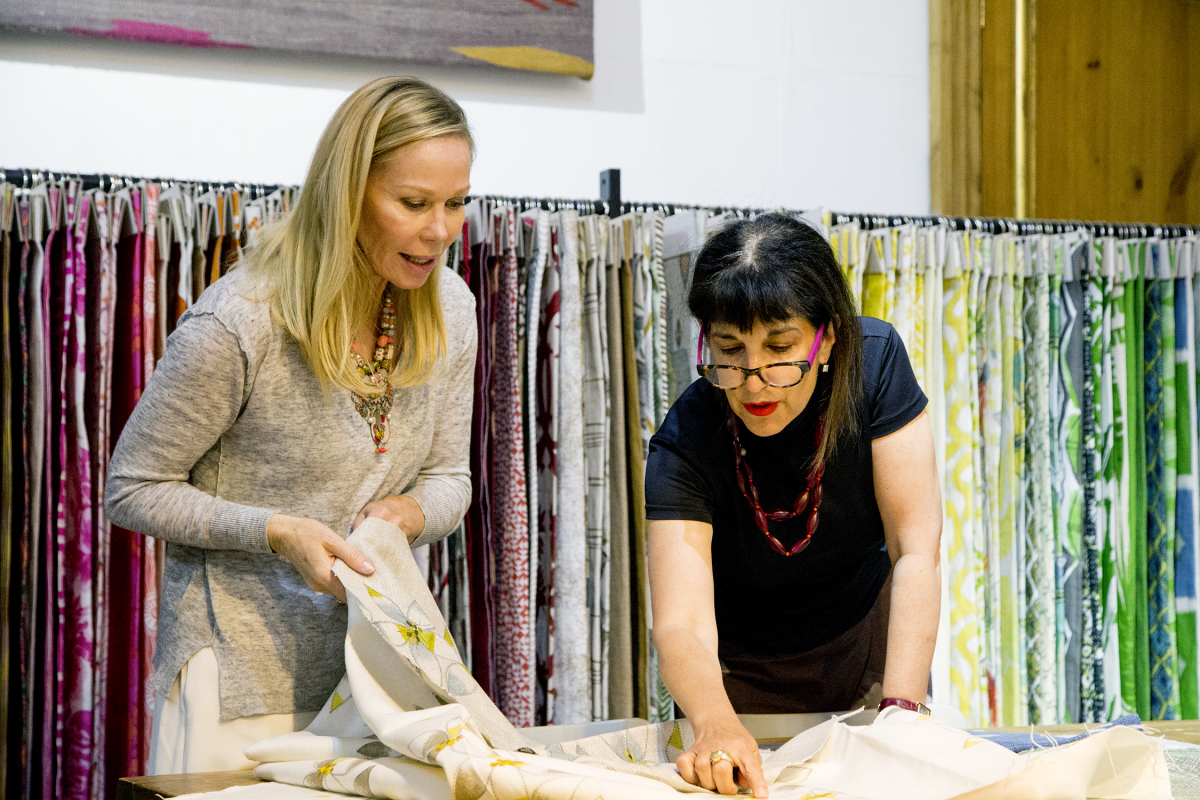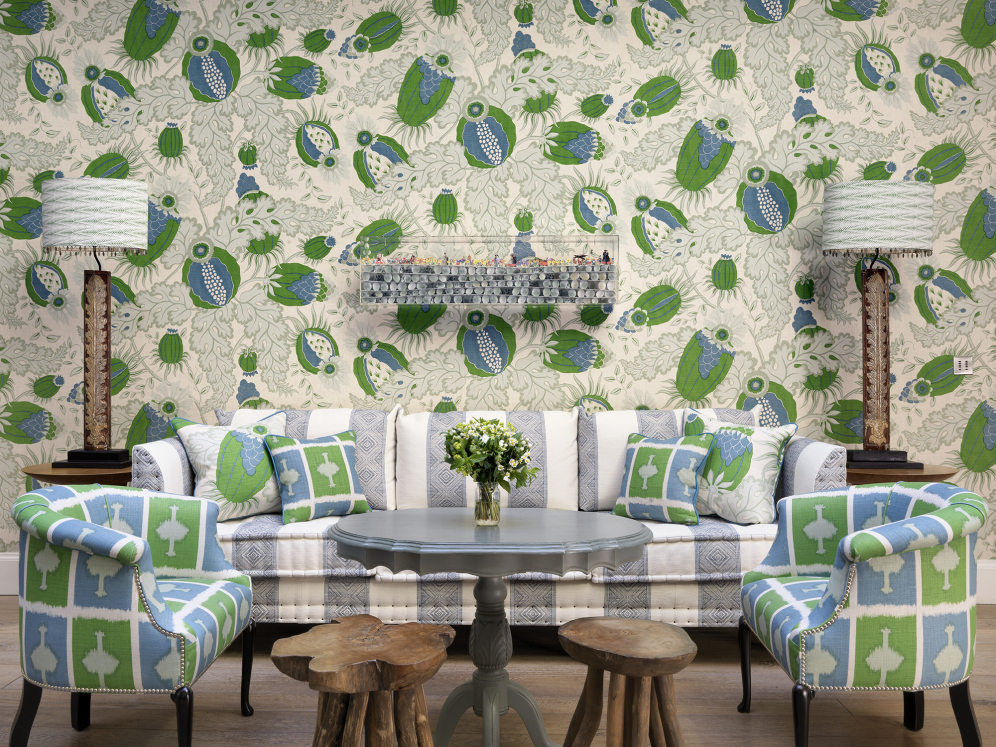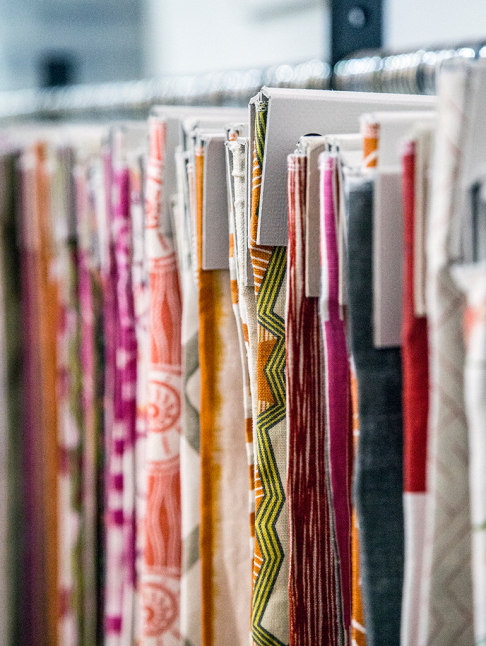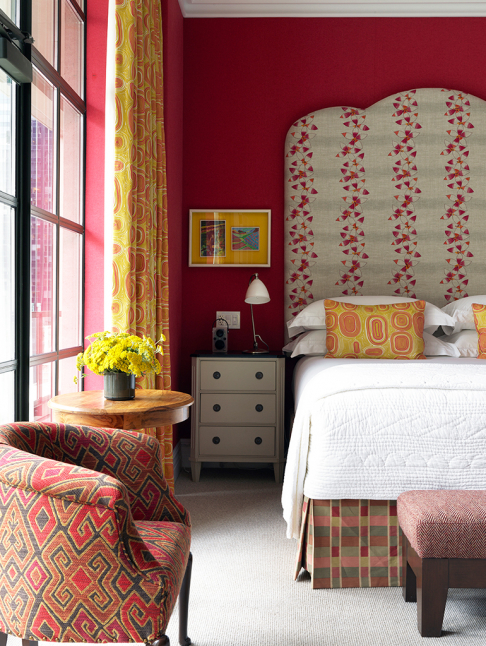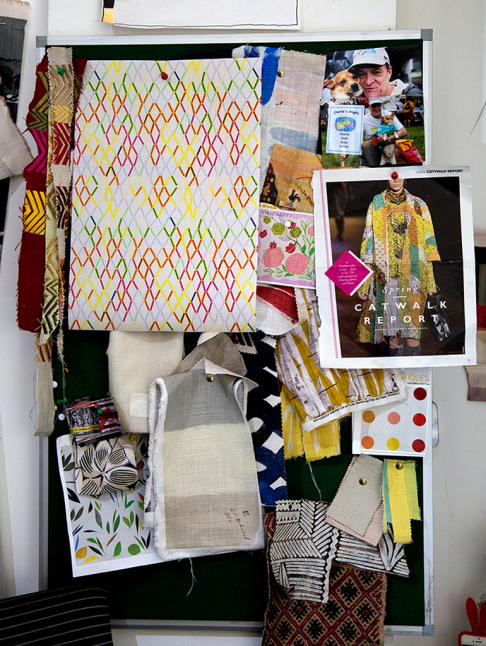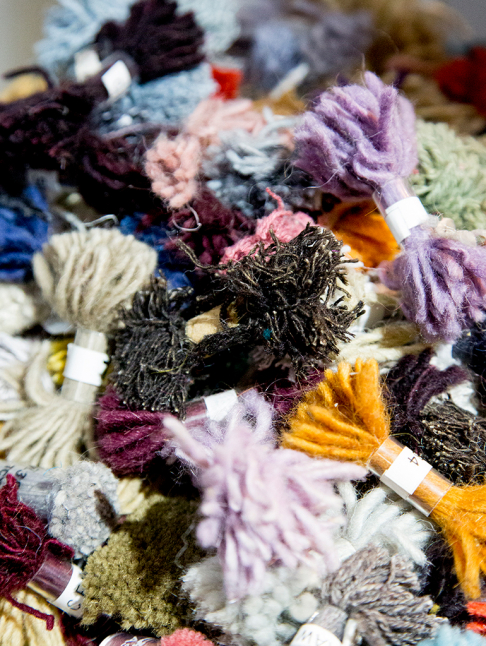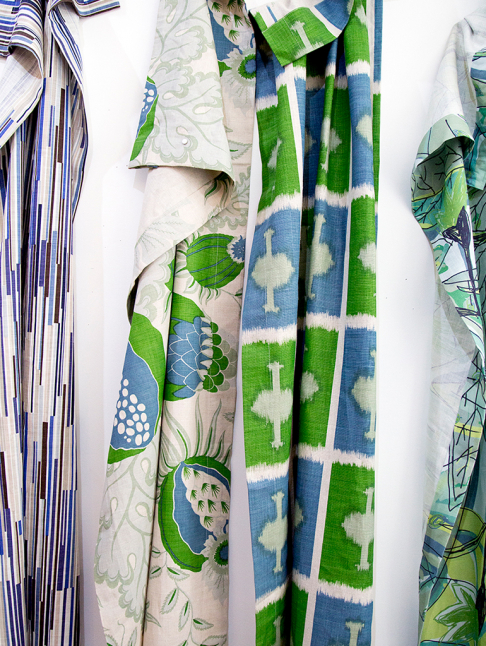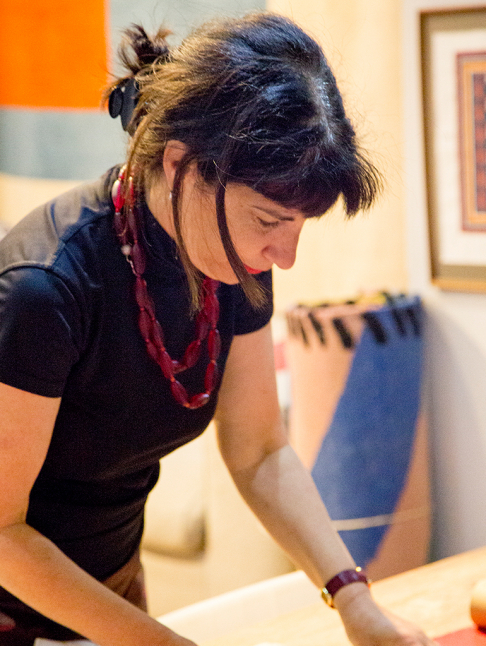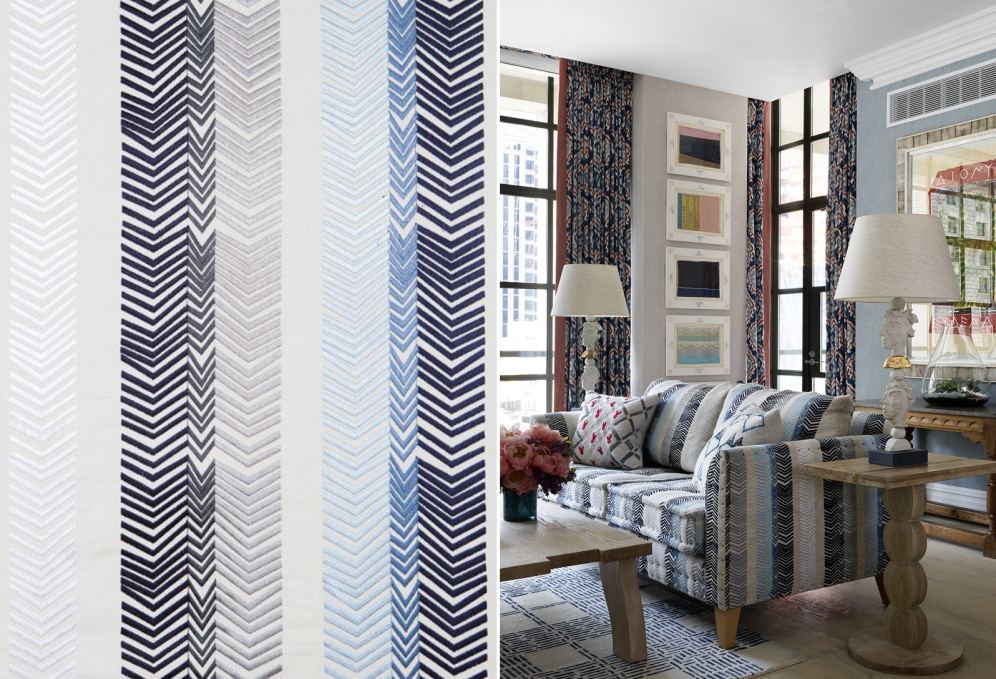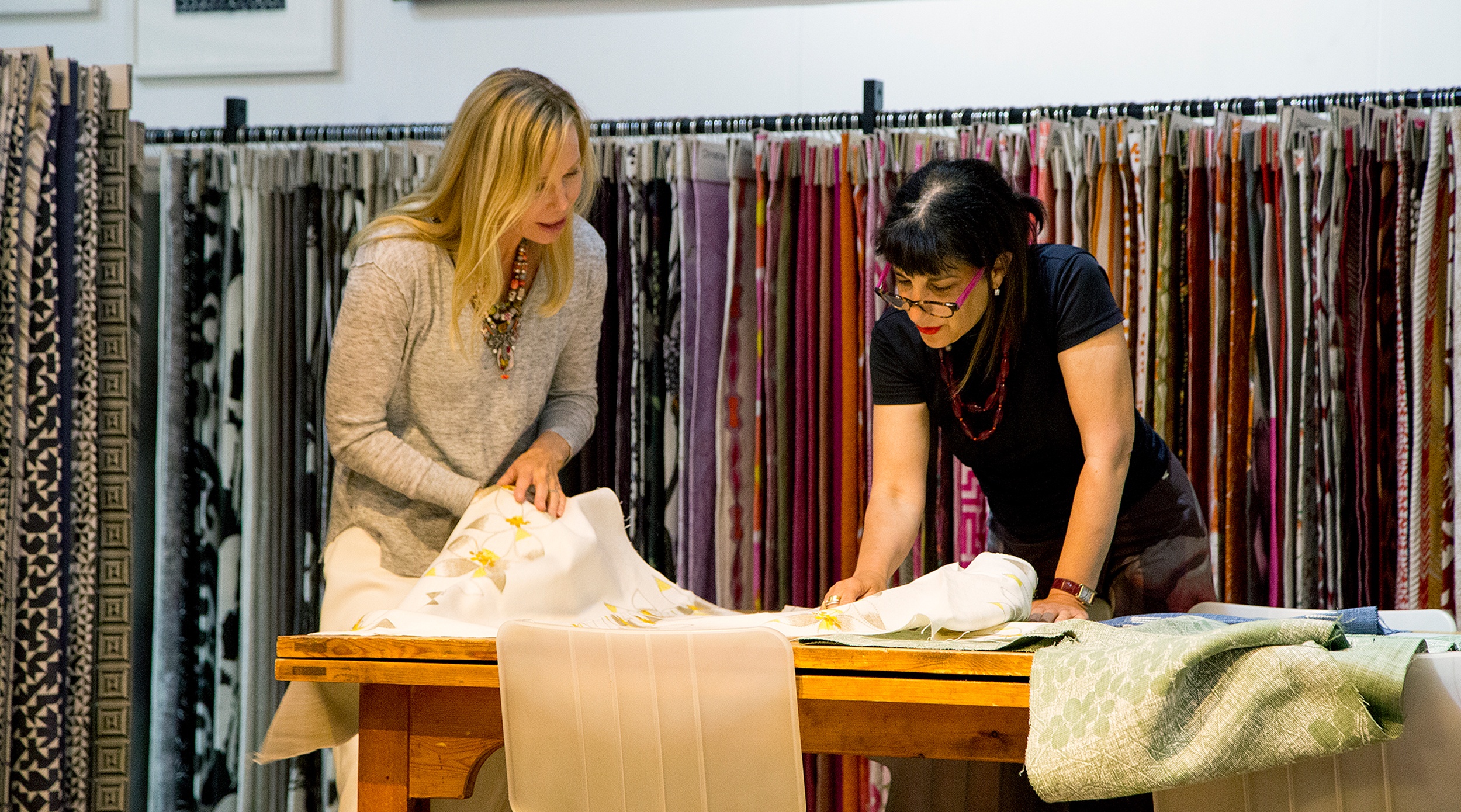
Meet the Maker: Michal Silver from Christopher Farr Cloth
Working with Christopher Farr’s Creative Director, Michal Silver is pure joy. She has the vision and technical know-how to bring our ideas to life. Together we have created prints, embroidery, weaves and a new collection of trims. This week we caught up with Michal to find out a bit more about her ethos and inspiration…
1. How did you get into fabrics?
I trained as a fashion designer. While working for Mulberry in the late 90s, designing the women’s and men’s collections, I was encouraged by Roger Saul, the then-owner of Mulberry to use the textiles from the Home Collection in the women’s line, and I fell in love. Designing fabrics was a natural progression. I eventually met Chris and Mat and in September 2000 we established Christopher Farr Cloth.
2. What is the drive for each collection?
It is a very organic process. We have our selected designers, the Kit Kemps and the Kate Blees, who we are always in conversation with, exchanging ideas and sharing our love for art and design. Through these conversations we develop new patterns and textures without a tight deadline. The collection is ready when we feel happy with our work.
We are always looking to the past at archival work by artists such as Raoul Dufy or Anni Albers, which we feel are relevant to what we are working on.
3. What inspires you?
Every art show I see, every person I talk to, travels I take and the books I read.
4. How important is colour? And which colour is your favourite?
Colour is fundamental in art, religion, in our everyday interactions with one another. There is great diversity in the use of colours and their associations between cultures. The German artist Kandinsky was one of the first artists who was able to express how different colours affected emotions, a core principle of modern art. His writing on colours and his work had a huge impact on my own work. Colour is the basis for building our collection and creating the connection between all the various temperaments, styles and designers we collaborate with. As for my favourite colour, I would have to choose between red and hot pink – but it’s RED.
5. What are the quality indicators for a fabric?
It must be useable, then it’s about the design integrity, the making, the colours, pattern, the touch.
6. Where are the fabrics produced?
We work with a very selective group of craftsmen to produce our collections. We print all our designs at a family owned printers in the outskirts of London. In the age of digital printing, we are still committed to hand printing and screen printing.
Our indoor woven collection is woven in Belgium in an artisanal mill with an impressive library of old textiles, books and artefacts for inspiration. They are exploring new weave structures and innovative yarn spinning. The outdoor collection is produced in collaboration with Perennials in their mills in Mexico, known for the research and innovation of high performance textiles.
7. Do you prefer printed, embroidered or woven fabrics? How different are they to produce?
It’s like kids, you LOVE them all! Each category has its strength, uniqueness and space. I mostly like different styles used together in an interior, it tells a better story, rich in texture, colour, and pattern. As for the production, they all require different manufacturing skills, machinery and passion.
8. How do you keep up with technological advances and how important are they in the design process?
I am afraid I really don’t. We don’t design on a computer; we use the software to help us with the technical side only. We start with an idea, a reference and it evolves from there, the way you would work on a collage. As for our colours, they are developed at the printers on the hand table, mixing the colours by hand a bit like cooking, adding some salt and pepper. We experiment with pattern and scale by creating test screens split into 2-3 different pattern repeats.
9. Which is your favourite collaboration and why?
Each collaboration is an exciting journey and I feel grateful for each one. I am happier when we are creating a collection with a living artist rather than a revival of an archival collection. It allows for a conversation. I spend a lot of time getting to know the designers we work with, we chat, we dine and wine but mostly share our love and thoughts for art and design.

